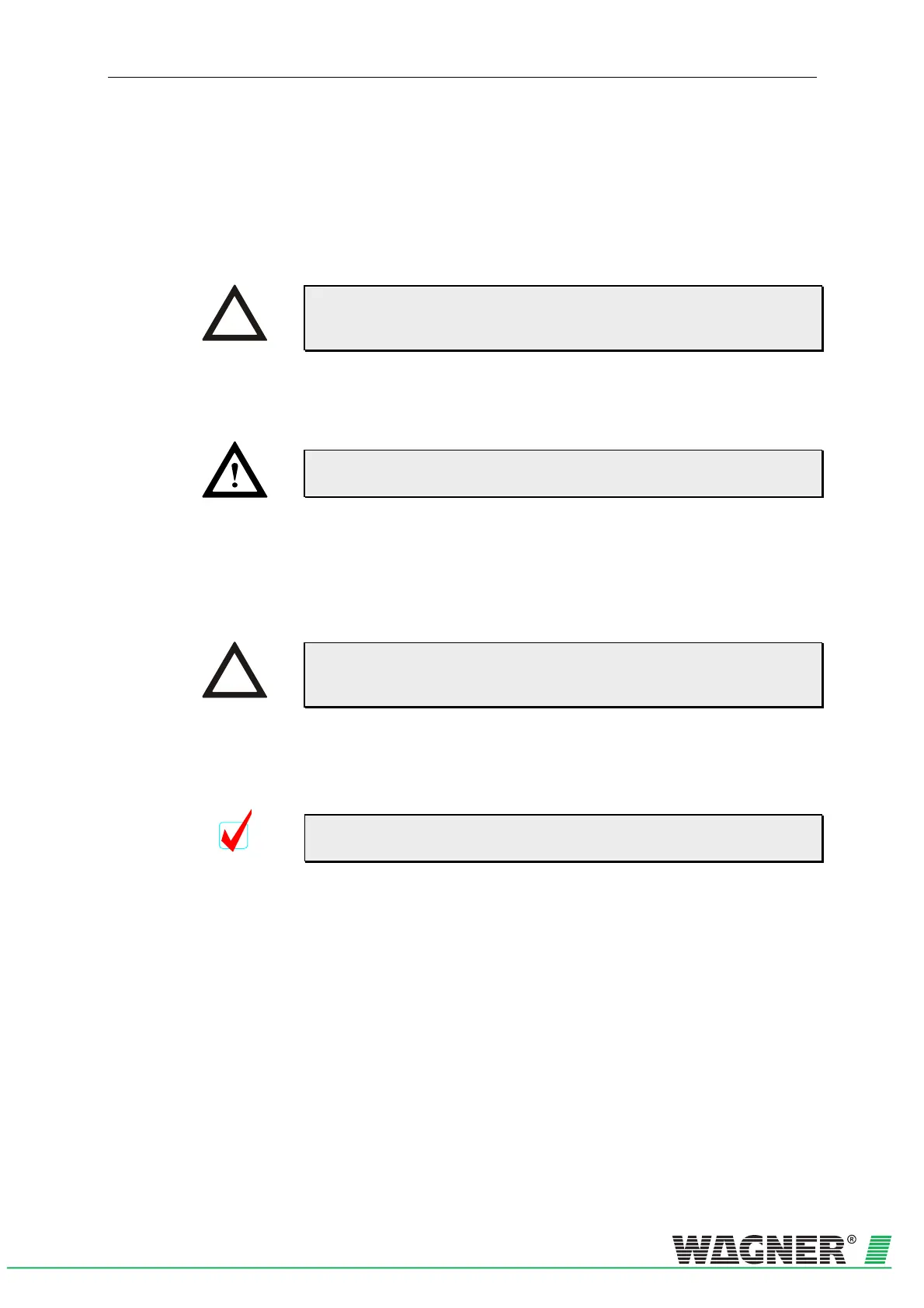Maintenance TITANUS MICRO·SENS
®
8 – 8 Data: 01/09 MS_A_08-en-e
Clearing an
air flow fault If air flow adjustment was conducted as air pressure-dependent and the
actual value is still no longer within the tolerance range for the air flow
threshold selected (air flow fault signalled by the device), then there must
be another fault variable apart from any air pressure or temperature
oscillation.
1. In this case, test that the pipe system is sealed tight and not blocked
(see Chapter 7.5).
If during fault location the pipe network was changed, the original pipe
system configuration must be restored after fault location is completed
and the air flow again adjusted.
2. If this test does not show any defects, check air flow monitoring by
connecting the test pipe and carrying out the function test described
in Chapter 7.7.2.
If there is a defect in air flow monitoring, only authorised personnel may
change the detection unit!
If the function test shows no deviations from the described proce-
dure, it is certain that there is no defect in air flow monitoring.
3. Adjust again with the pipe system connected.
You must record the type of adjustment (air pressure-dependent or air
pressure-independent) and possibly the figures for air pressure, height
above sea level and voltage set, in the testing records.
4. Note the current air flow value during this maintenance session or
check it at the latest at the next inspection.
With the aid of the diagnosis software, all stored and current device data
and the settings input using the diagnosis tool can be stored as files.
5. If there is a similar ideal value deviation as before, interfering
environmental influences are the cause of this deviation. If these
negative influences cannot be stopped from affecting air flow
monitoring, the air flow range must be increased.
INSTRUCTION
ATTENTION
INSTRUCTION
TIP

